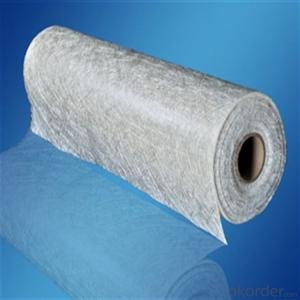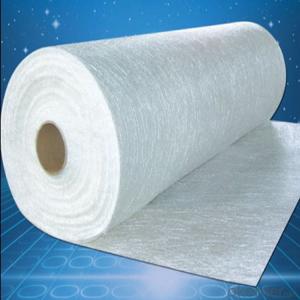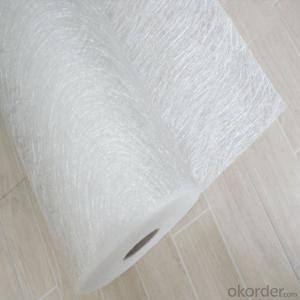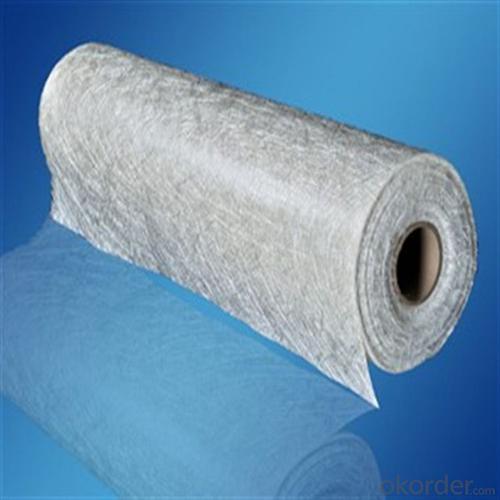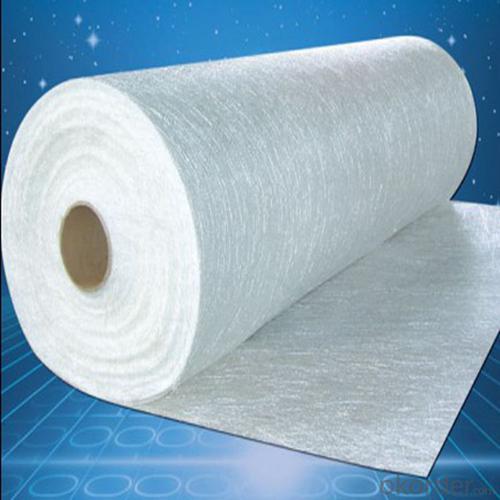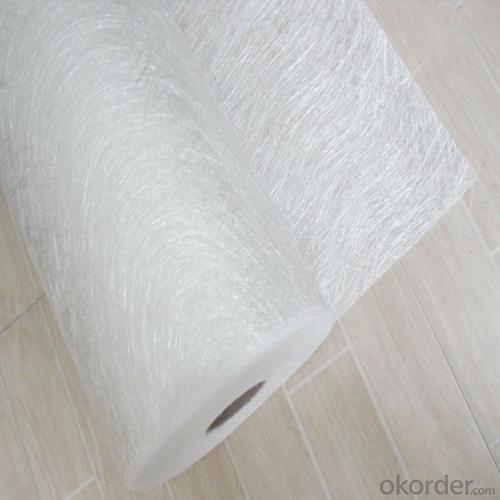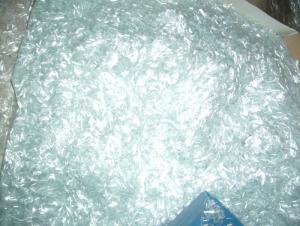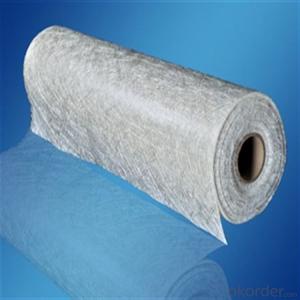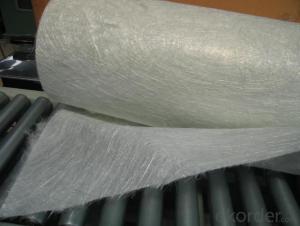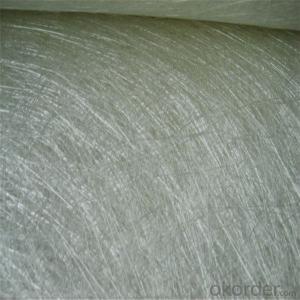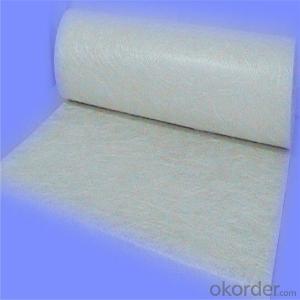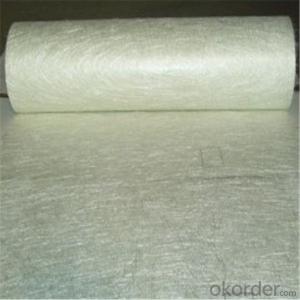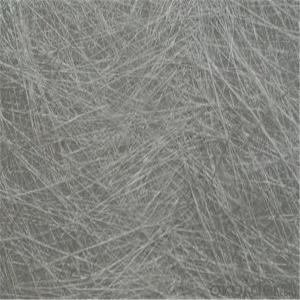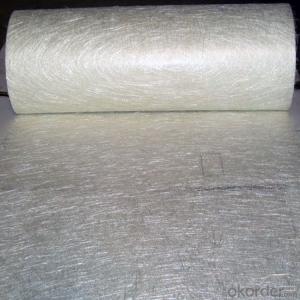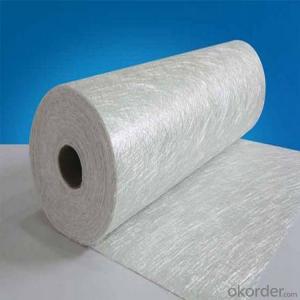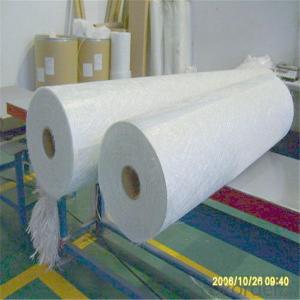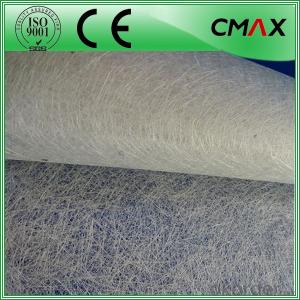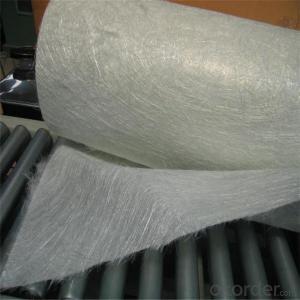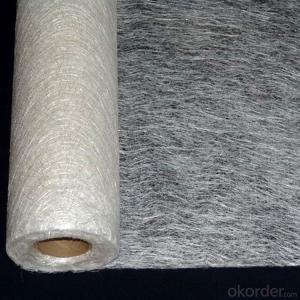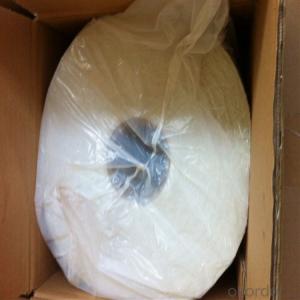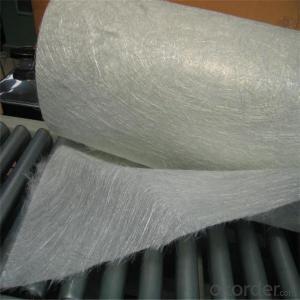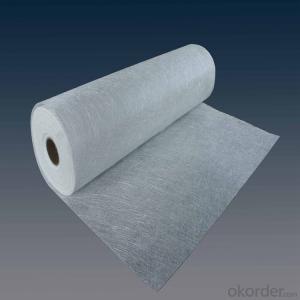Ppg Chopped Strand Fiberglass Reinforced Raw Materials Fiberglass Mat
- Loading Port:
- China main port
- Payment Terms:
- TT OR LC
- Min Order Qty:
- 1 kg
- Supply Capability:
- 5000 kg/month
OKorder Service Pledge
OKorder Financial Service
You Might Also Like
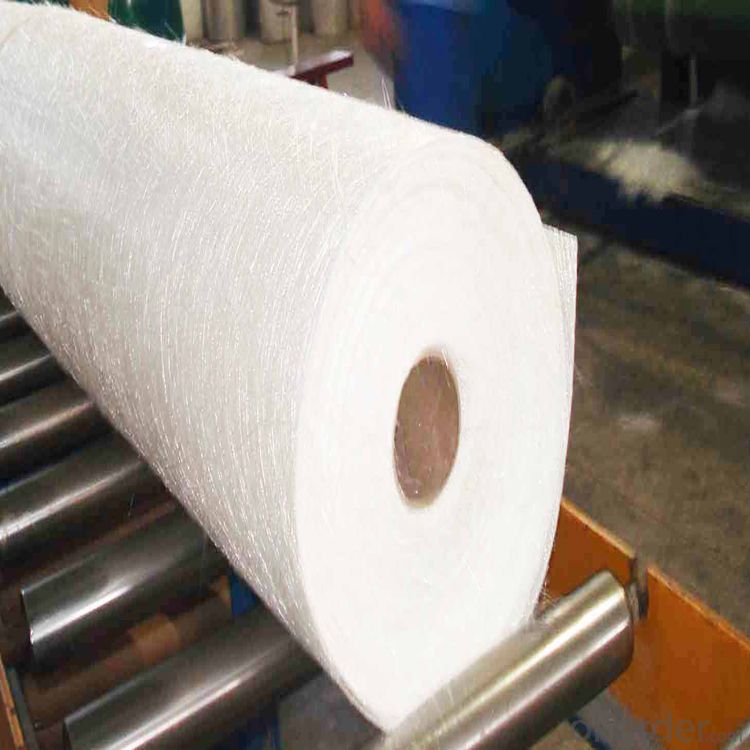
Product Description:
Chopped strand mat is made from chopped glass fibers, which are bonded with powder or emulsion binders. It can be used in hand lay-up process and continuous laminating process to produce FRP products, such as plates, lighting board, hull, bathtub, cooling towers, anti-corrosion materials, vehicles.
Features:
Uniform thickness, softness and hardness good.
Good compatibility with resin, easy completely wet-out.
Fast and consistent wet-out speed in resins and good manufacturability.
Good mechanical properties, easy cutting.
Good cover mold, suitable for modeling complex shapes.
Application:
fiberglass thickness is suitable for application by hand lay-up, reinforce and machine FRP molding,
including interior decoration of vehicles, boat hulls, complete set of sanitary equipment, anticorrosive pipes, tanks, building materials, tables, chairs, panels and all kind of composite FRP products.
Specifications:
Item | Over Density | Moisture Content | Chop Density | Polyester Yarn | Width |
(g/m2) | (%) | (g/m2) | (g/m2) | (mm) | |
EMK300 | 309.5 | ≤0.15 | 300 | 9.5 | 50-3300 |
EMK380 | 399 | 380 | 19 | ||
EMK450 | 459.5 | 450 | 9.5 | ||
EMK450 | 469 | 450 | 19 | ||
EMC0020 | 620.9 | 601.9 | 19 | ||
EMC0030 | 909.5 | 900 | 9.5 |
Special products are available according to customer’s requirement.
Product Packaging:
Each Surface Tissue is wound onto a paper tube which has an inside diameter of 76mm and the mat roll has a diameter of 330mm. The mat roll is wrapped up with plastic film,and then packed in a cardboard box or wrapped up with kraft paper. The rolls can be vertically or horizontally placed. For transportation, the rolls can be loaded into a cantainer directly or on pallets.
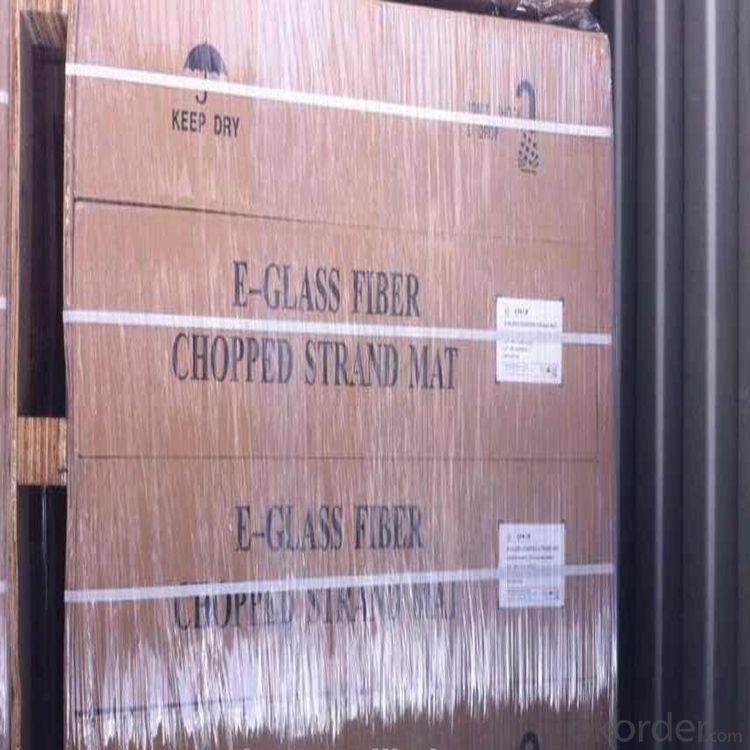
Product Storage:
Unless otherwise specified, Chopped Strand Mat should be stored in a dry, cool and rain-proof area. It is recommended that the room temperature and humidity should be always maintained at 15℃~35℃ and 50%~75% respectively.
Company Information
CNBM (China National Building Material) Group is the largest comprehensive building materials group in China that in integrate scientific research, manufacturing and logistics into one entity. The largest building materials and equipment specialists in China. Upon State Council approval, today CNBM owned more than 300 subordinate manufacturing factories and servicing companies. There are 6 fully owned public listed companies and 11 partially owned with substantial shares public listed companies. In many of these fields, CNBM is playing the leading role in the building industry in the country.
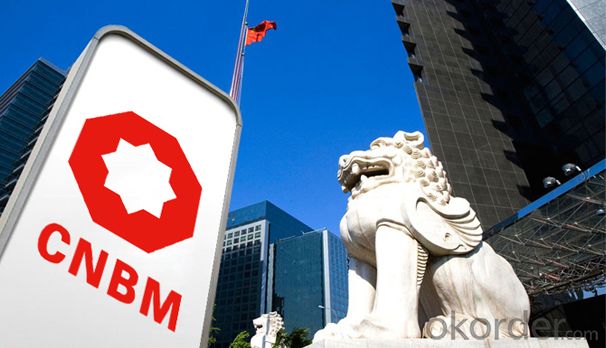
Order Information
Ordering please specify:
1. the product code, 2. weight, 3. width, 4. order quantity, 5. packaging, 6. special requirements please specify.
FAQ:
1. How long will you get reply?
Any inquiry will be replied within 24 hours. Usually we will reply within 12 hours.
2. How long is warranty period?
We provide 3 year warranty period.
3. What is your MOQ?
Any order quantity is available.
4. Can you provide sample?
Yes, samples are in stock. we can offer free sample for you.
5. Payment terms?
We can accept L/C, T/T, Western Union, Paypal etc.
6. Do you offer OEM service?
Yes, we can print customers’ logo on the packaging;
And the size and specification can be produced and design according to your demand.
7. What is the Production Lead Time?
15-20 days for bulk production after confirm the order.
- Q: How is fiberglass chopped strand used in the transportation industry?
- Fiberglass chopped strand is extensively used in the transportation industry for various applications. One of its primary uses is in the manufacturing of composite materials for vehicles. Chopped strand mat (CSM) made from fiberglass is commonly used in the production of automobile body parts such as hoods, roofs, doors, and trunks. Fiberglass chopped strand mat provides excellent reinforcement properties, making it ideal for enhancing the structural integrity and strength of vehicle components. The fibers are randomly oriented and bound together with a binder, creating a mat-like material that can be molded into different shapes. This flexibility allows manufacturers to create lightweight yet durable parts that contribute to improved fuel efficiency and overall performance of vehicles. Additionally, fiberglass chopped strand is also used in the production of composite panels, interior components, and insulation in transportation vehicles. Due to its high strength-to-weight ratio, it helps reduce the overall weight of the vehicle while maintaining structural integrity. This weight reduction is crucial in the transportation industry as it directly impacts fuel consumption and emissions. Moreover, fiberglass chopped strand is highly resistant to corrosion, chemicals, and UV radiation, making it an excellent choice for exterior vehicle applications. It helps protect the vehicle's body against environmental factors and improves its longevity. In summary, fiberglass chopped strand is widely used in the transportation industry due to its reinforcement properties, lightweight characteristics, and resistance to corrosion and chemicals. It plays a crucial role in manufacturing composite materials that enhance the strength, durability, and performance of vehicles while reducing their weight and environmental impact.
- Q: What is the melting point of fiberglass chopped strand?
- The melting point of fiberglass chopped strand can vary depending on the specific composition and manufacturing process. However, in general, fiberglass chopped strand has a relatively high melting point ranging from approximately 1000°C to 1500°C (1832°F to 2732°F). This high melting point is one of the key properties that make fiberglass a popular material for various applications, including insulation, construction, and automotive industries. It is important to note that the melting point can also be influenced by factors such as the presence of additives or coatings on the fiberglass strands. Therefore, it is always recommended to consult the manufacturer or specific product datasheets for accurate information on the melting point of a particular fiberglass chopped strand product.
- Q: How is the delamination resistance of fiberglass chopped strand composites determined?
- The delamination resistance of fiberglass chopped strand composites is determined through various mechanical tests, such as interlaminar shear strength (ILSS) testing, double cantilever beam (DCB) testing, or mode I fracture toughness testing. These tests evaluate the ability of the composite material to resist delamination or separation between layers under applied stress or loading conditions.
- Q: Can fiberglass chopped strand be used in the production of insulation foams?
- Yes, fiberglass chopped strand can be used in the production of insulation foams. Fiberglass is a commonly used material in insulation due to its excellent thermal performance and durability. Chopped strand is essentially small strands of fiberglass that are cut into shorter lengths. These chopped strands can be mixed with other materials, such as resins or foaming agents, to create insulation foams. The use of fiberglass chopped strand in insulation foams offers several benefits. First, fiberglass is a good insulator, which means it can effectively trap heat or cold and prevent it from escaping or entering a space. This property makes it ideal for use in insulation materials, where the goal is to regulate temperature and improve energy efficiency. Second, fiberglass chopped strand can enhance the structural integrity of insulation foams. By reinforcing the foam, the chopped strands can help improve its strength, durability, and resistance to deformation. This is particularly important in applications where the foam will be subject to mechanical stress or compression. Lastly, fiberglass chopped strand is relatively lightweight, making it suitable for use in lightweight insulation foams. This can be advantageous for applications where weight is a concern, such as in the automotive or aerospace industries. In conclusion, fiberglass chopped strand can be successfully used in the production of insulation foams. Its thermal insulating properties, reinforcing capabilities, and lightweight nature make it a valuable component in creating high-performance insulation materials.
- Q: What are the typical creep properties of fiberglass chopped strand composites?
- Fiberglass chopped strand composites possess certain characteristics that are commonly associated with creep. Creep refers to the tendency of a material to deform and relax under a continuous load or stress over an extended period of time. In comparison to metals or polymers, fiberglass chopped strand composites demonstrate relatively low levels of creep. This can be attributed to the reinforcing qualities of the fiberglass strands, which provide strength and rigidity to the composite. Various factors influence the occurrence of creep in fiberglass chopped strand composites, including temperature, humidity, and the magnitude of the applied load. When exposed to higher temperatures, the creep rate tends to increase as the matrix material softens, enabling greater deformation. Similarly, elevated levels of humidity can hasten creep as moisture weakens the matrix and diminishes the overall composite strength. The level of applied load or stress also impacts the creep behavior of fiberglass chopped strand composites. Higher loads typically result in higher creep rates, as the material undergoes more significant deformation under the continuous stress. Nevertheless, the reinforcing nature of the fiberglass strands helps mitigate creep by dispersing the load and preventing localized deformations. In summary, fiberglass chopped strand composites exhibit relatively low creep characteristics, making them suitable for applications that necessitate dimensional stability and resistance to prolonged stress. However, it is essential to consider the specific environmental conditions and load requirements to ensure that the material's performance aligns with the desired expectations.
- Q: What are the fire resistance properties of fiberglass chopped strand?
- Fiberglass chopped strand exhibits excellent fire resistance properties due to its composition and manufacturing process. The main component of fiberglass is a type of glass called E-glass, which is made up of silica, soda, lime, and alumina. These materials have inherently high melting points and do not easily combust when exposed to flames. Additionally, the manufacturing process of fiberglass involves subjecting the E-glass to high temperatures and pulling it into thin strands, which enhances its fire resistance. This process removes any organic impurities and creates a material that is highly resistant to heat and flames. When exposed to fire, fiberglass chopped strand does not burn or spread flames. It remains structurally intact, maintaining its strength and integrity. This quality makes it suitable for various applications where fire safety is a concern, such as in the construction of fire-resistant walls, ceilings, and insulation materials. Furthermore, fiberglass chopped strand has low thermal conductivity, meaning it does not conduct heat efficiently. This property helps to minimize the spread of heat during a fire, providing additional protection to the surrounding areas and preventing the fire from spreading. Overall, fiberglass chopped strand is highly regarded for its fire resistance properties, making it a preferred choice in industries where fire safety is of utmost importance.
- Q: How does the diameter of fiberglass chopped strand affect its performance?
- The diameter of fiberglass chopped strands plays a significant role in determining its performance. A smaller diameter generally leads to improved mechanical properties, such as increased tensile strength, flexural strength, and impact resistance. This is because smaller diameter strands have a higher surface area to volume ratio, allowing for a more effective transfer of stress and load across the material. Moreover, smaller diameter strands offer better dispersion and wet-out in resin systems, resulting in improved overall composite properties. This enhanced wet-out ensures better adhesion between the fibers and the resin matrix, leading to increased strength and stiffness of the composite material. Additionally, the diameter of chopped strands affects the processing characteristics of the fiberglass. Smaller diameter strands are more easily dispersed in resin systems, leading to improved flowability and reduced fiber entanglement during molding processes. This allows for better fiber distribution and orientation within the composite, enhancing its overall performance. However, it is worth noting that there is a trade-off between diameter and handling characteristics. Smaller diameter strands can be more difficult to handle during manufacturing processes due to their increased susceptibility to breakage and tangling. Therefore, it is essential to strike a balance between the desired performance characteristics and ease of handling when selecting the diameter of fiberglass chopped strands for a particular application.
- Q: How does the fiber length affect the properties of fiberglass chopped strand?
- The properties of fiberglass chopped strand are significantly influenced by the length of its fibers. To begin with, the strength and mechanical properties of the fiberglass are directly affected by the fiber length. Fibers that are longer have a higher aspect ratio, meaning their length is greater in comparison to their diameter. This aspect ratio enhances the fiberglass's load-bearing capacity and tensile strength. Furthermore, longer fibers provide a larger surface area for bonding with the resin matrix, resulting in improved adhesion and overall mechanical performance. Additionally, the impact resistance and toughness of the fiberglass are influenced by the fiber length. Longer fibers have a tendency to dissipate energy more effectively, allowing them to absorb and distribute impact forces across a wider area. This enhanced impact resistance is particularly advantageous in applications where the fiberglass may experience high levels of stress or impacts. Furthermore, the stiffness and dimensional stability of the fiberglass are impacted by the fiber length. Longer fibers offer increased rigidity and resistance to deformation, leading to improved dimensional stability. This is especially important in applications that require the fiberglass to maintain its shape and resist warping or bending under load. Moreover, the fiber length can affect the processability and handling characteristics of the fiberglass. Shorter fibers are generally easier to mix and disperse within a resin matrix, making them more suitable for applications that require good flowability and uniform distribution. On the other hand, longer fibers can present challenges in processing due to their tendency to clump or become tangled, necessitating the use of specialized equipment and techniques for effective dispersion. In conclusion, the fiber length is a vital factor in determining the strength, impact resistance, stiffness, and processability of fiberglass chopped strand. Selecting the appropriate fiber length based on the specific requirements of the application is crucial to ensure optimal performance and desired properties.
- Q: Is fiberglass chopped strand UV resistant?
- Yes, fiberglass chopped strand is typically UV resistant. The UV resistance of fiberglass chopped strand is mainly attributed to the properties of the resin used to bind the strands together. Most resins used in fiberglass manufacturing, such as polyester or epoxy resins, have inherent UV resistance. Additionally, manufacturers often incorporate UV stabilizers into the resin formulation to enhance the UV resistance of the final product. This helps prevent the degradation of the fibers when exposed to sunlight or other sources of UV radiation. However, it is important to note that the level of UV resistance can vary depending on the specific resin formulation and manufacturing process. Therefore, it is recommended to consult with the manufacturer or supplier to ensure that the specific fiberglass chopped strand being used meets the required UV resistance specifications for the intended application.
- Q: Can fiberglass chopped strand be used in chemical resistant applications?
- No, fiberglass chopped strand is not typically used in chemical resistant applications. While fiberglass is known for its strength and durability, it is not inherently resistant to many chemicals. In applications where resistance to chemicals is required, other materials such as specialty resins or coatings that are designed to withstand specific chemicals are typically used instead. These materials provide a higher level of chemical resistance and protect against corrosion or degradation caused by exposure to harmful substances. Therefore, it is recommended to consider alternative materials that are specifically formulated to meet the chemical resistance requirements of the application.
Send your message to us
Ppg Chopped Strand Fiberglass Reinforced Raw Materials Fiberglass Mat
- Loading Port:
- China main port
- Payment Terms:
- TT OR LC
- Min Order Qty:
- 1 kg
- Supply Capability:
- 5000 kg/month
OKorder Service Pledge
OKorder Financial Service
Similar products
Hot products
Hot Searches
Related keywords
